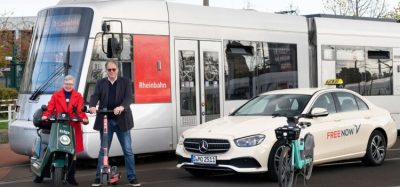Madrid enforces ban on polluting vehicles within the city centre
- Like
- Digg
- Del
- Tumblr
- VKontakte
- Buffer
- Love This
- Odnoklassniki
- Meneame
- Blogger
- Amazon
- Yahoo Mail
- Gmail
- AOL
- Newsvine
- HackerNews
- Evernote
- MySpace
- Mail.ru
- Viadeo
- Line
- Comments
- Yummly
- SMS
- Viber
- Telegram
- Subscribe
- Skype
- Facebook Messenger
- Kakao
- LiveJournal
- Yammer
- Edgar
- Fintel
- Mix
- Instapaper
- Copy Link
Posted: 30 November 2018 | Intelligent Transport | No comments yet
The ban of traffic in the centre of the city has seen a reduction in rush hour traffic, air and noise pollution levels, and the safety of the zone increase.


Madrid has banned polluting vehicles in the city centre, as part of the Plan for Air Quality and Climate Change, with the aim of reducing pollution and noise, and improving the distribution of public space in the city.
This decision has caused a significant reduction in traffic throughout the Central Madrid area, with generalised decreases of between 10 and 45 per cent.
Compared to 23 November 2018, a week before the ban was implemented, the travel times of the EMT lines in the Central Madrid area have fallen by 24.2 per cent. The speed of the lines has also increased notably: 22 per cent in the area and 21.7 per cent in the routes that access Central Madrid.
When this data is compared with those of the same date for 2017, the results are equally positive. The travel times improve by 21 per cent and the speed increases between 20 and 25 per cent depending on the type of lines.
All this entails a considerable increase in the regularity of the service. EMT has begun to apply reinforcements in 32 lines of its network, mainly those that travel to and access Central Madrid.
A total of 10 routes have been defined, covering the perimeter of the low emission area, as well as the main roads that cross the downtown district.
The Environment and Mobility Area and the Centre district have maintained contacts with neighbourhood associations, merchants, administrations and professional associations to raise awareness of Central Madrid and collect suggestions.
On 30 November 2018, Central Madrid began the information phase, in which there may be manual controls of police and mobility agents. It will be a transition phase until the start of the automatic control system in January 2019, which will have a period of two months of notifications of infringement without a fine.
Likewise, in the streets that access Central Madrid there has been clear and simple road signs installed, both vertical and horizontal, with the identification logo and restricted areas. There is, painted on the road, a double red line that indicates the perimeter of Central Madrid.
The low emission area spans 472 hectares.
Central Madrid will be able to eliminate traffic passing through the district and also the most polluting vehicles and those that perform the most kilometres, achieving a reduction of emissions of 40 per cent in the area.
The first part of the plan, which was approved in September 2017, has achieved the vote of confidence of the European Commission, which has given the deadline to meet the air quality objectives until 2020 to Madrid, along with Barcelona.
As a general rule, only the vehicles of persons registered in the Central Madrid area and with reduced mobility will be permitted within the exclusion zone. In addition, there are a series of exceptions and moratoriums for various groups, such as the guests of the residents (20 invitations per month), urban distribution of merchandise, service companies, security and emergency forces, schools and night workers, in order to guarantee the daily needs of the people who live and visit the district.
For all other vehicles, there are some general rules based on the environmental labels of the DGT. Vehicles with a ZERO and ECO label can access and park in the SER. And those with B or C labels can park in a private garage.
In the case of motorcycles and mopeds, they can enter and park without limitations with a ZERO or ECO label.
Related topics
Air Quality, Alternative Power, Sustainable Urban Transport, Transport Governance & Policy
Related cities
Madrid
Related organisations
European Commission, General Directorate of Traffic (DGT)
Related people
Manuela Carmena







